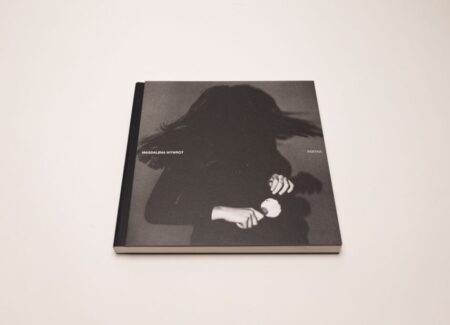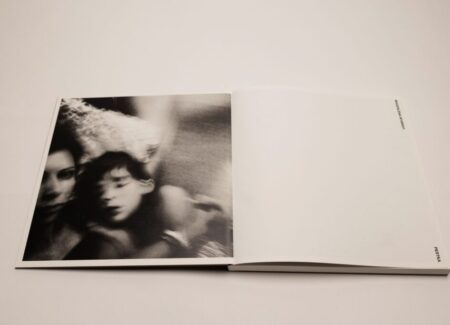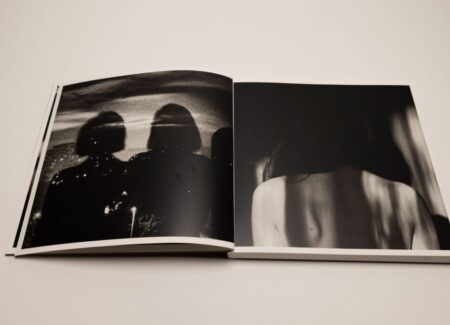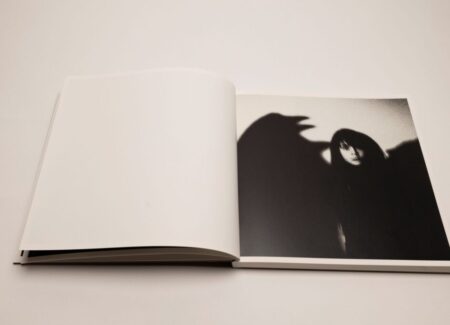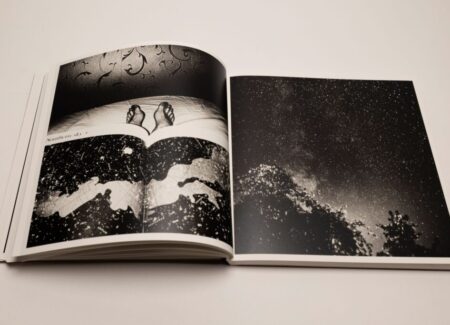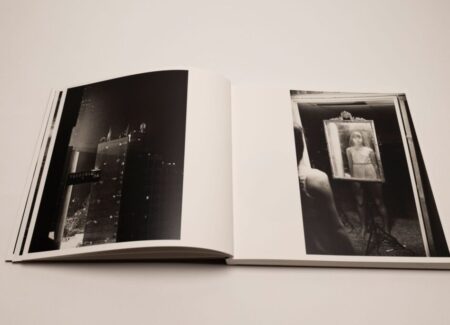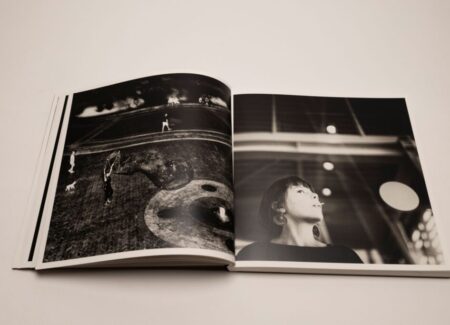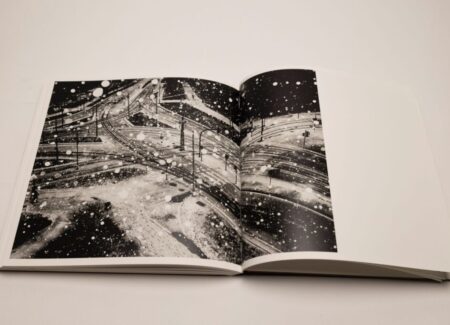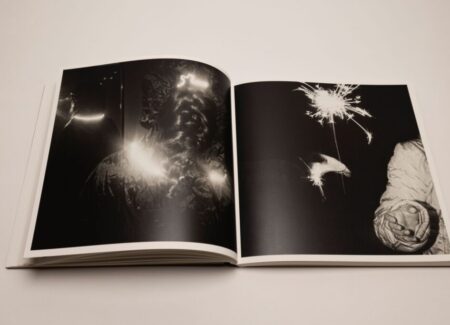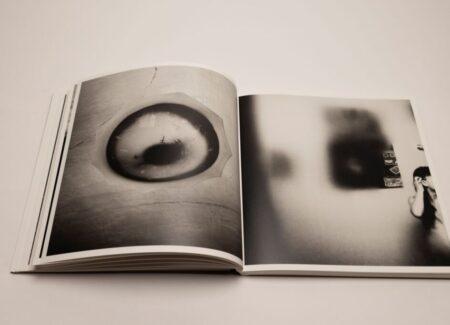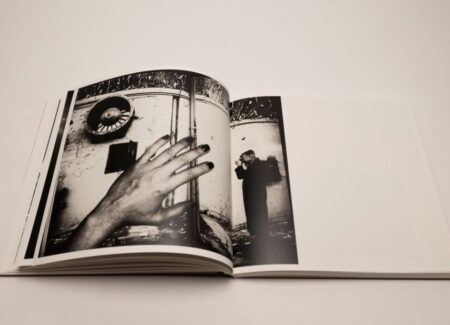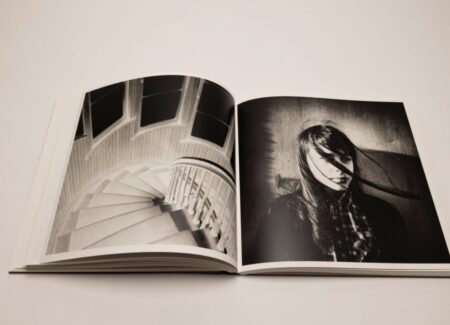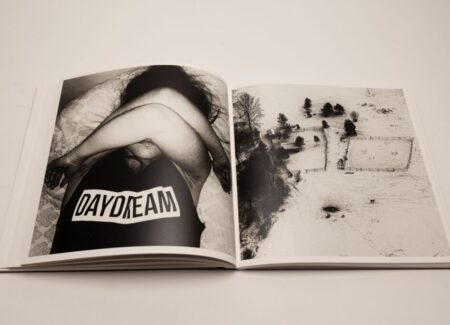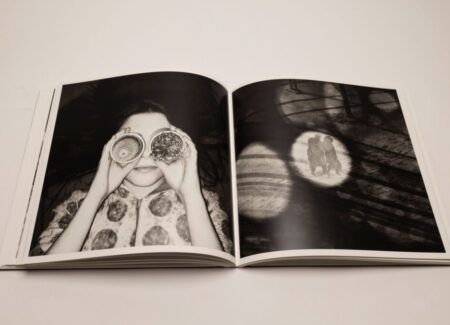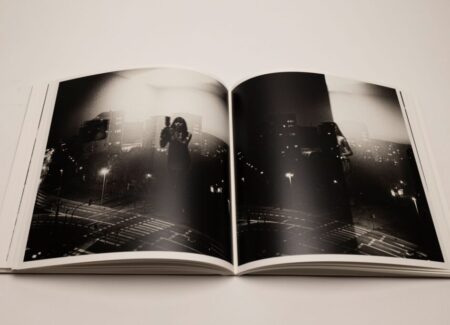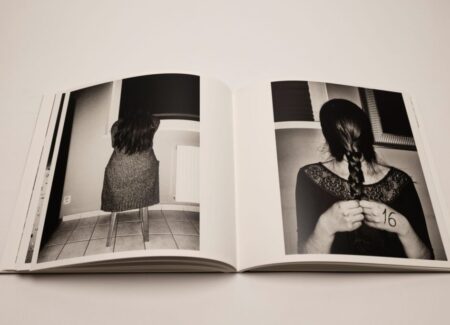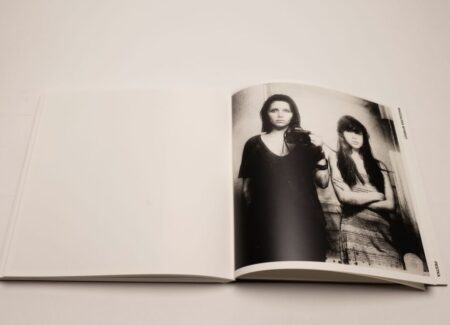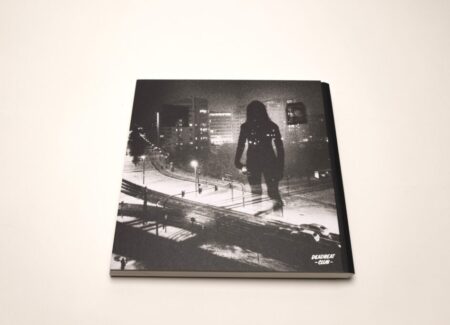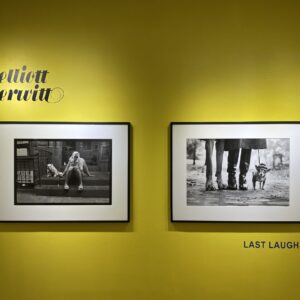JTF (just the facts): Published in 2024 by Deadbeat Club Press (here). Hardcover (9.5 x 9.5 inches), 146 pages, with 103 black-and-white photographs. Includes essays by Barbara Rosemary and David Campany. Design by Clint Woodside. (Cover and spread shots below.)
Pestka is also available in a special edition (here). This version includes a signed and numbered book with an archival pigment print on cotton rag paper in protective folio, also signed and numbered. There are two print options: print A is 8.5 x 8.5 inches and print B is 7 x 9 inches. In an edition of 15 copies for each print.
Comments/Context: In Pestka, the first photobook by the Polish photographer Magdalena Wywrot, the artist documents life with her daughter Barbara during a period of eleven years, mainly through her daughter’s adolescence, and with a few exceptions, most of the images were created within the confines of a small apartment in Kraków. Wywrot’s blurred, grainy, high-contrast black-and-white photographs create a darkly imaginative universe capturing an intimate mother-daughter dynamic. The title of the book is an affectionate nickname for her daughter, and means seed or kernel in Polish.
Wywrot met her husband as she was finishing high school (when she was nineteen and he was forty-two), and her daughter was born a couple of years later. The marriage didn’t work out, and at some point, Wywrot moved with her young daughter to Kraków. She began photographing Pestka pretty much as soon as she was born, but before turning to photography as an art form, Wywrot was a clarinetist, playing in a quartet. She is largely a self-taught photographer, and during a workshop with the Polish collective Sputnik, she came up with the idea of making the photographs of her daughter more of a project.
As a photobook, Pestka has a simple clean design, aimed at keeping our full attention on its content. It is a square format book, with the pages hosted between two boards and a thin black strip of cloth running around the spine. A black-and-white photograph of a woman with her floating hair obscuring her face takes up the entire cover, while the title of the book and the artist’s name are embossed in silver letters in the middle. Inside, the images vary in their size and placement on the pages, often creating unexpected pairings and resonances. There are no captions or page numbers, and the included essays appear closer to the end.
At the beginning of the series, Wywrot and her daughter were mostly having fun taking photos, and as that activity grew into a project, the photographs became more orchestrated. The opening photograph is placed right on the endpaper, a blurry shot of the artist looking in the camera as her six year old daughter naps on her shoulder; it serves as a gentle and mysterious introduction to the book. The following spread pairs two photographs: in one, the silhouettes of two women, both with short haircuts and roughly the same height, reflect in the window, and in the second, shadows drift across the back of a woman; both images are indirect, offering glimpses and mysteries rather than visual facts. Throughout the book, this loose engagement continues, with shots of Pestka playing, laughing, making faces, dancing, being moody, or calmly posing.
Wywrot uses various techniques to capture their relationship and Pestka’s transformation as she grows up. In the earliest photos, she often observes her daughter and captures calmer moments, sharing rather private moments. In one instance, Barbara’s reflection is seen at the window glass as she is caught deep in her thought while doing her homework. As Barbara grows up, she starts taking a more active part in the photoshoots. At some point, it becomes harder to tell who is the photographer and who is the daughter.
As her daughter grows, Wywrot’s images become even darker and more surreal. In one picture, her daughter appears as a shadow figure, jumping on a bed with her hair and limbs up in the air, and later in the book she lands that jump looking like a fireball. In another shot, a mirror reflects the daughter’s head and torso, but the legs are mismatched. Another photo (it also appears on the back cover) shows Barbara’s dark silhouette reflected in window glass, seemingly standing against the streets below the apartment.
Overall, the photographs are dark, grainy and moody. They tell little about their actual living environment, rather immersing us in an imaginative fantasy world that reflects intimate mother-daughter dynamics. Throughout the series, Wywrot employs shadows, ghostly figures, doubles, reflections, light flares, raven-like silhouettes, etc. and she makes plenty of compelling image pairings across spreads. A photo of feet sticking out from under an open map of the Southern sky is placed near a shot of a starry nighttime sky. An image of the daughter playfully covering her eyes with small cacti pots (which look like surreal glasses) while wearing a shirt with a circle pattern sits across from dappled bright spots of pedestrians outside the window walking in the snow, also encircled as though seen through binoculars. The photobook ends with a more straightforward portrait of Wywrot and her daughter, reflected in a mirror, as they stand next to each other, and this is the only time they look straight in the camera. This last images references an opening shot of their silhouettes next to each other.
Wywrot’s series recalls a number of projects that have focused on family relationships and mother-daughter connections. Ruth Lauer Manenti crafted a tender portrait of her mother, mixed with the meditative rhythms of her domestic life, in her book I Imagined It Empty (reviewed here). And the Polish photographer Aleksandra Żalińska captured a loving relationship with her grandmother, as published in a book titled But Please Be Careful Out There (reviewed here). These projects, and others like them, offer different creative approaches in depicting the nuanced bonds of family.
Pestka is a considered and elegant photobook, beautifully designed and produced. The result is a playfully engaging photobook experience, overflowing with energy and visual interest, that offers a powerfully atmospheric reflection on the unspoken connections between mother and daughter.
Collector’s POV: Magdalena Wywrot does not appear to have consistent gallery representation at this time. Collectors interested in following up should likely connect directly with the artist via her website (linked in the sidebar).
